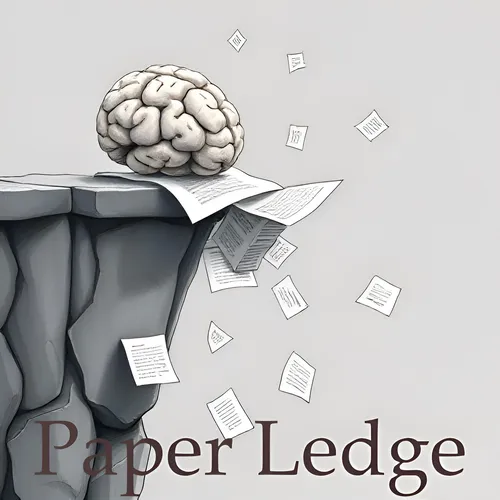Artificial Intelligence - Simulating Human-Like Learning Dynamics with LLM-Empowered Agents
- Author
- ernestasposkus
- Published
- Fri 08 Aug 2025
- Episode Link
- https://www.paperledge.com/e/artificial-intelligence-simulating-human-like-learning-dynamics-with-llm-empowered-agents/
Hey PaperLedge crew, Ernis here, ready to dive into some fascinating research! Today, we're tackling a paper that asks a really fundamental question: Can we use AI to understand how humans learn?
Now, you might be thinking, "AI teaching us about ourselves? That sounds like a sci-fi movie!" But stick with me, because this is actually incredibly cool and has implications for how we design education and even how we train AI itself.
So, the problem the researchers are trying to solve is this: existing methods for studying learning, like controlled experiments or rule-based models, often fall short. They struggle to capture the nuances of how learning unfolds over time, how different learning strategies impact progress, and, perhaps most importantly, why a learner succeeds or fails.
Think of it like trying to understand how a plant grows by only taking snapshots at the beginning and end. You miss all the crucial stuff in the middle - the watering, the sunlight, the soil quality. These researchers wanted a more dynamic, detailed view of the learning process.
Their solution? They built something called "LearnerAgent," a multi-agent framework powered by Large Language Models, or LLMs. Think of LLMs as the really smart AI models that power things like ChatGPT. LearnerAgent is essentially a simulated classroom filled with AI students, each programmed with a different learning style.
They created different "student" profiles based on well-established psychological learning styles:
- Deep Learners: These are the students who really want to understand the "why" behind things. They connect new information to what they already know and strive for mastery.
- Surface Learners: These students are more focused on memorizing facts and figures to pass exams. They might not grasp the underlying concepts as deeply.
- Lazy Learners: Well, you can probably guess what these learners are all about! They tend to put in the minimum effort required.
- General Learner: This is the "control group" student – a basic LLM without any specific learning style programmed in. This helps the researchers see the baseline behavior of the AI.
These AI students then go through a simulated school year, complete with weekly lessons, monthly strategic decisions (like choosing what to focus on), periodic tests, and even interactions with their peers. The researchers tracked their progress over time to see how their learning styles impacted their outcomes.
The results were pretty fascinating! Here are a few key takeaways:
- Deep Learners win the long game: Only the "Deep Learners" showed consistent and sustained cognitive growth throughout the year. This reinforces the importance of understanding concepts deeply, not just memorizing them.
- Surface Learners get tricked: The researchers designed "trap questions" that exposed the shallow understanding of the "Surface Learners." This is like asking a student who memorized a formula if they understand the underlying principle – they might get the answer wrong because they don't truly understand the concept.
- AI self-perception is a thing!: The "General Learner," despite its cognitive limitations, developed surprisingly high self-confidence! This raises interesting questions about how AI perceives its own abilities and limitations.
- The base LLM is a "diligent but brittle Surface Learner": This is perhaps the most important finding. The researchers discovered that the default behavior of the LLM is to act like a good student who tries hard but lacks true, generalizable understanding. It's good at mimicking behavior, but the understanding is shallow.
So, why does this matter? Well, for starters, it gives us a new tool for understanding human learning. By creating these AI simulations, we can test different teaching strategies and see how they impact different types of learners. It also gives us valuable insights into the current limitations of Large Language Models. If these models are "Surface Learners" by default, we need to think carefully about how we train them and ensure they develop true understanding, not just the ability to mimic human behavior.
And that has implications for everything from education to AI safety.
Here are a few things that were buzzing in my head after reading this:
- If the default LLM is a "Surface Learner," how does that affect the information it provides to users? Are we getting accurate information, or just well-presented regurgitation?
- Could this "LearnerAgent" framework be used to personalize education, tailoring teaching methods to individual learning styles?
- How do we ensure that AI, as it becomes more integrated into our lives, develops true understanding and avoids the pitfalls of "brittle" knowledge?
What do you guys think? Hit me up on the socials and let me know your thoughts on this paper. Until next time, keep learning!
Credit to Paper authors: Yu Yuan, Lili Zhao, Wei Chen, Guangting Zheng, Kai Zhang, Mengdi Zhang, Qi Liu
